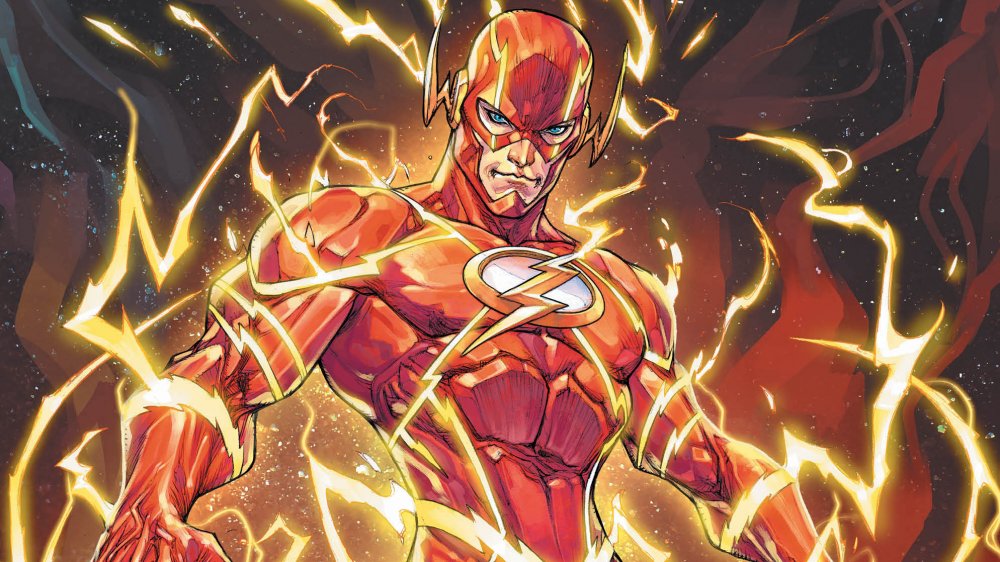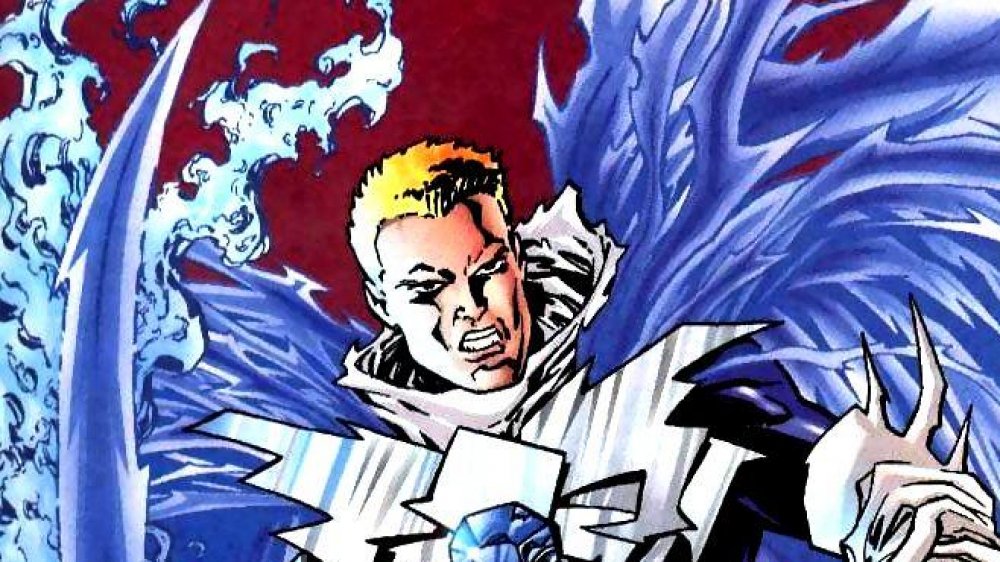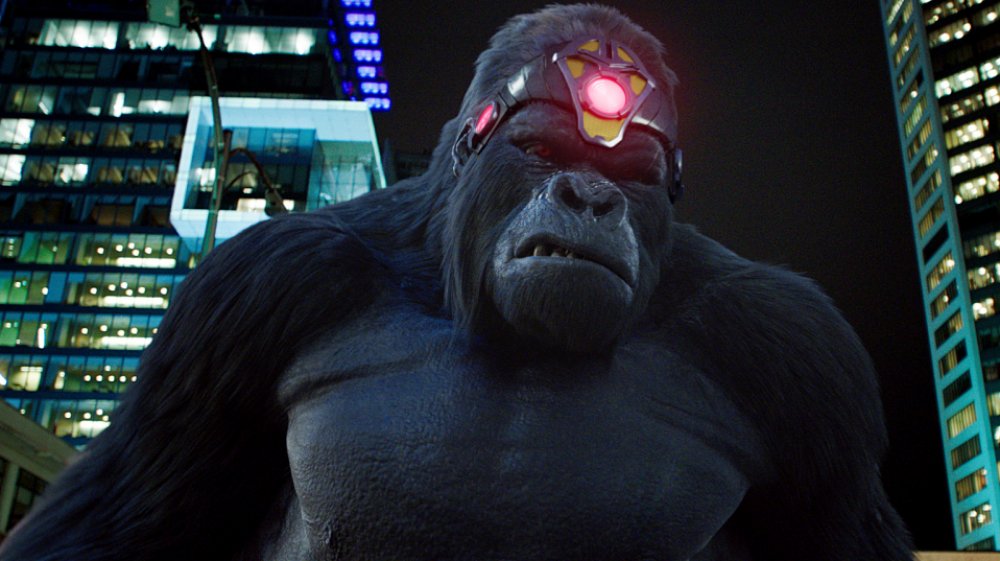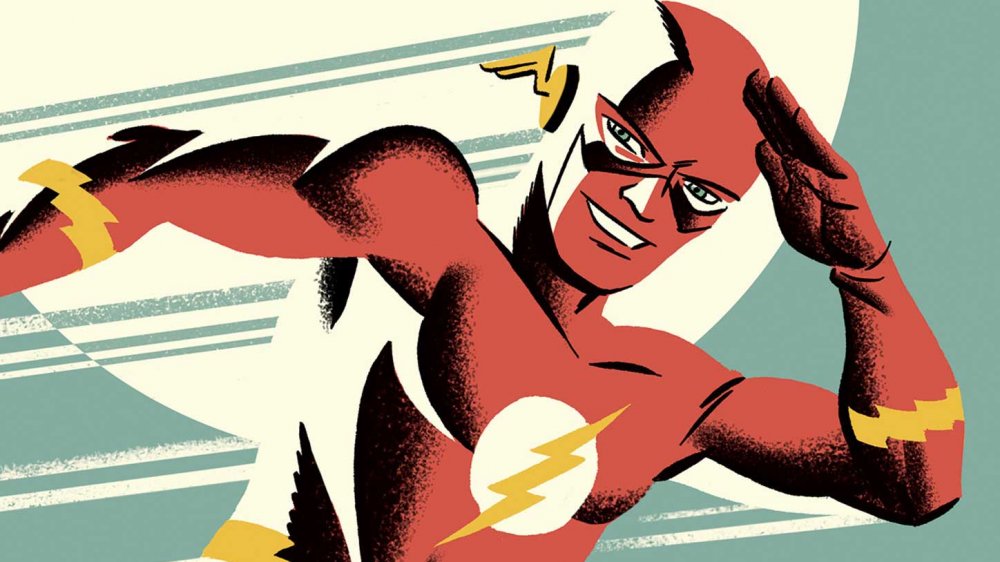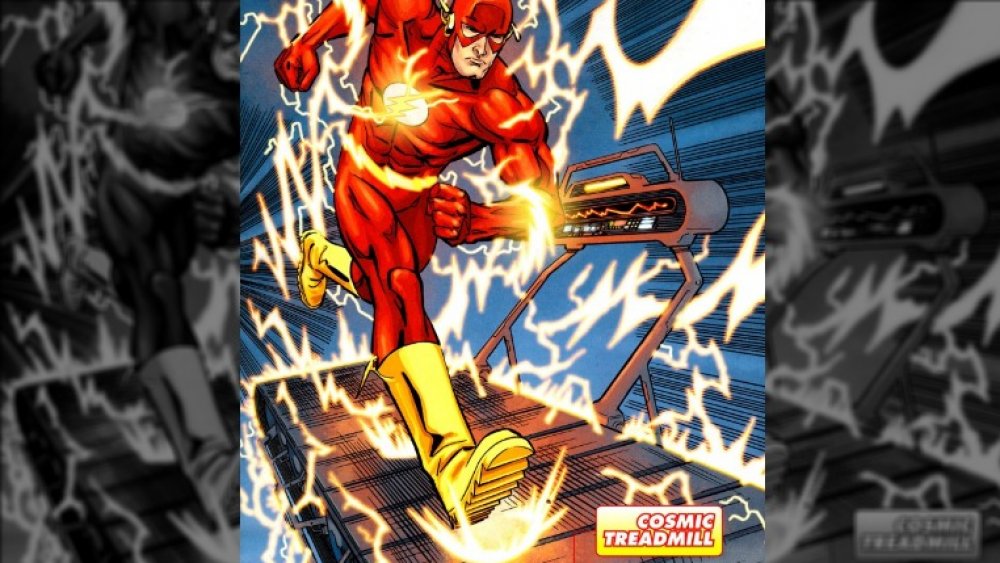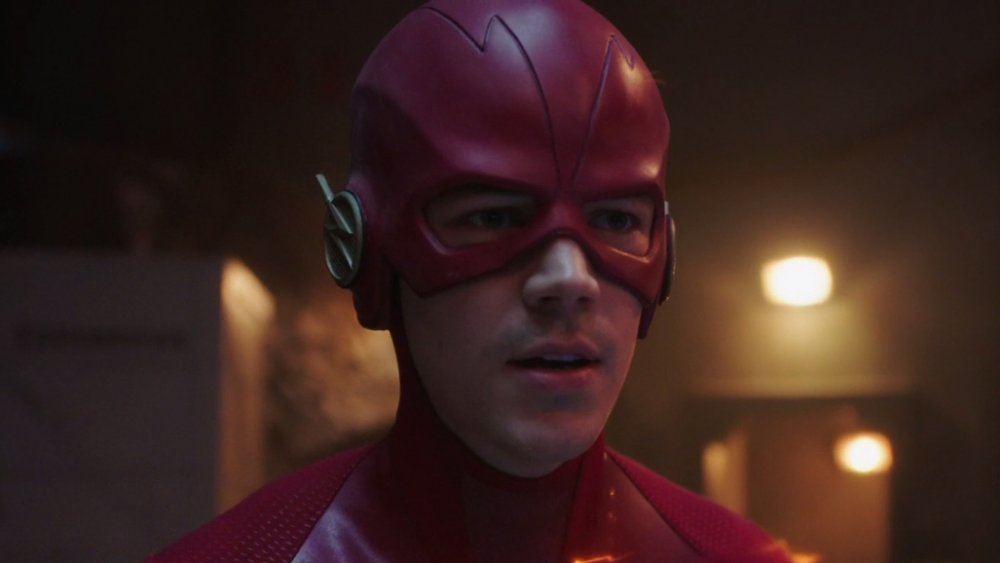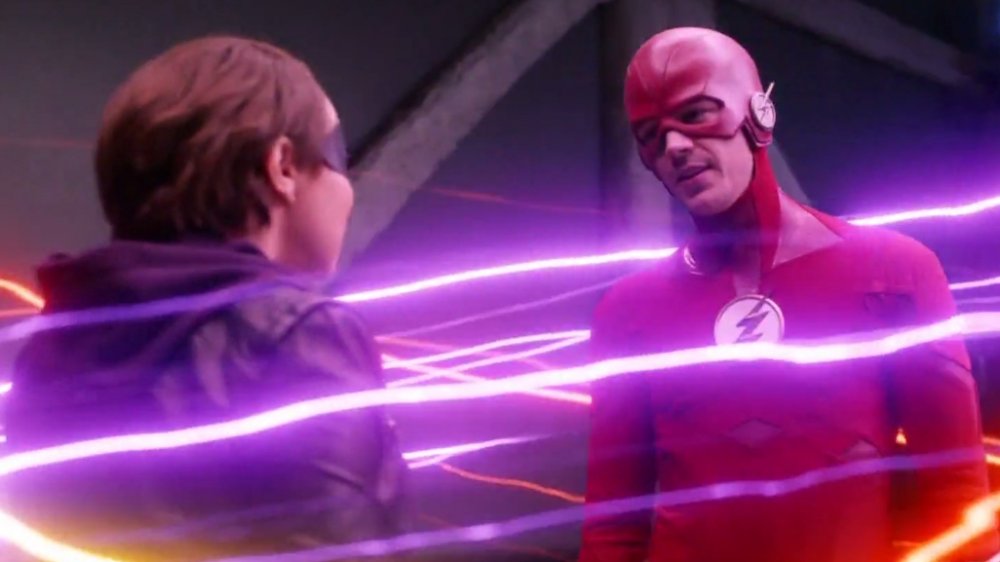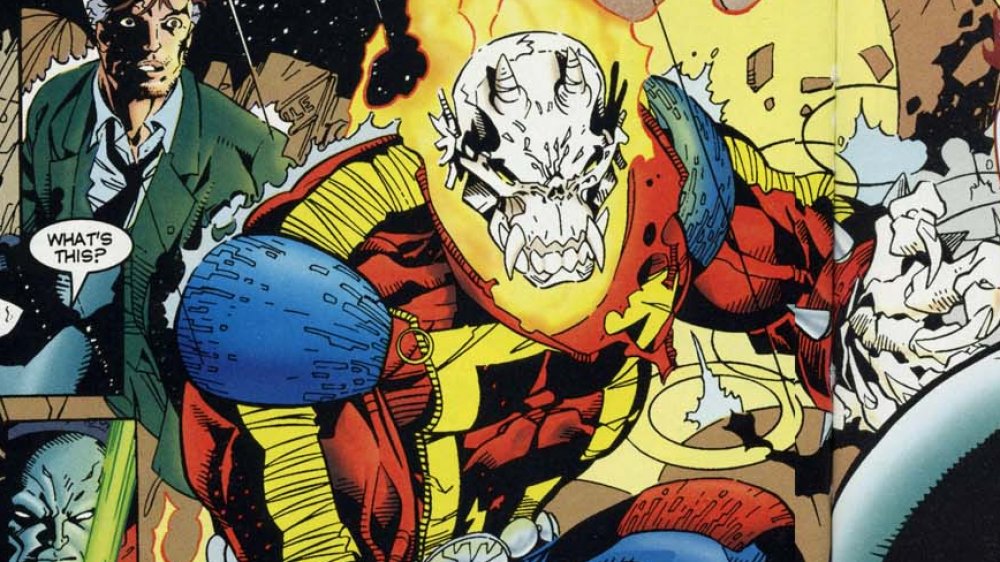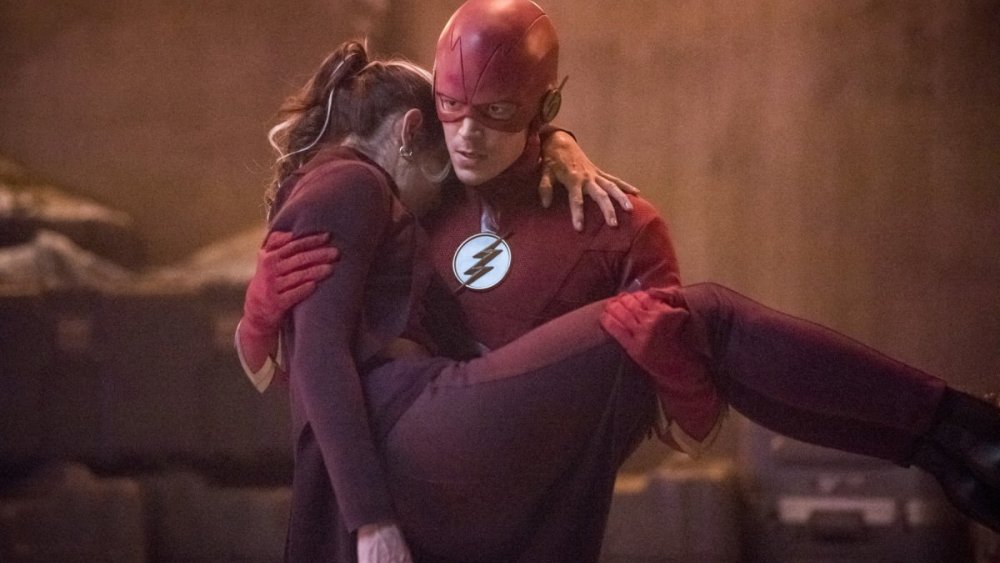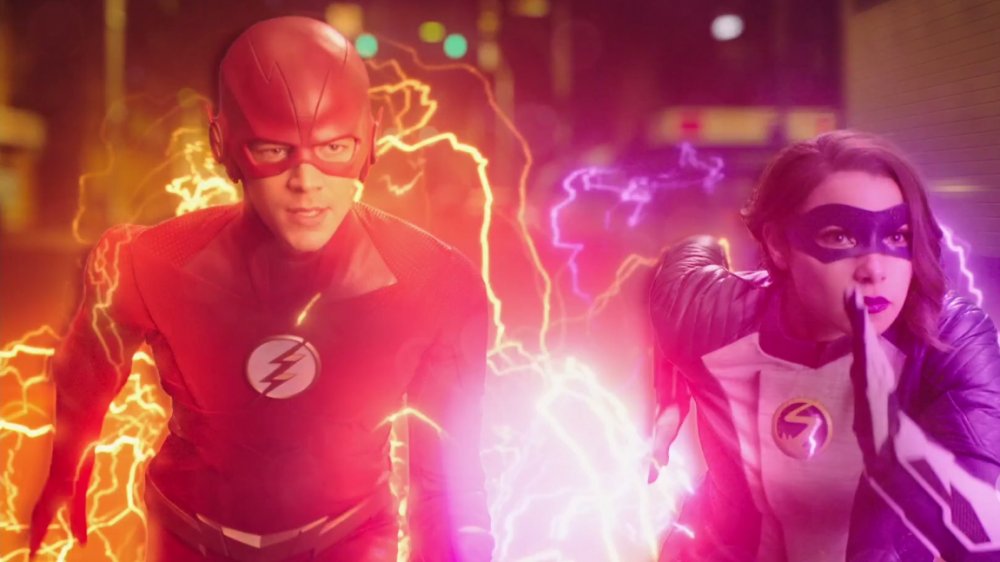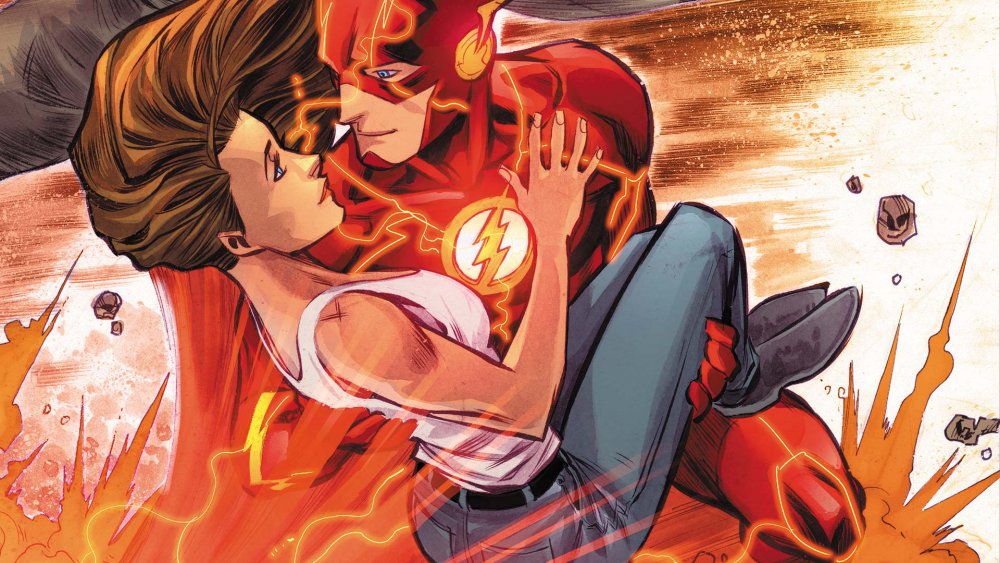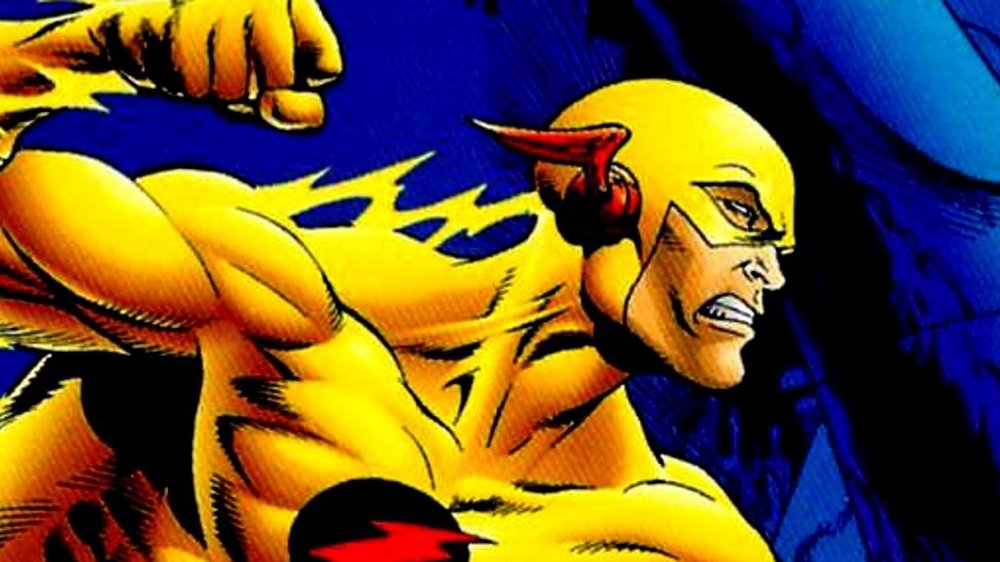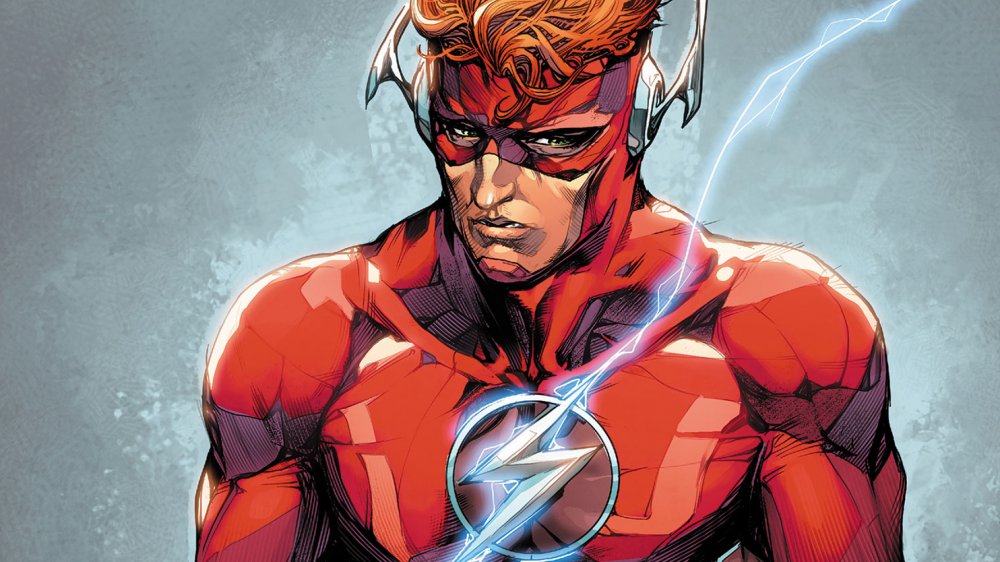The Untold Truth Of The Flash
When talking about the superheroes of the DC Universe, most people tend to focus on Batman, Superman, and Wonder Woman, but as any true comics fan could tell you, the publisher's roster of classic characters runs quite a bit deeper than that super-trinity — and the scarlet speedster known as the Flash is a perfect example.
Like many (ahem) long-running heroes, the Flash has a fairly complicated history that includes more than one person fighting crime under the moniker. The first iteration of the character dates back to 1940, when a man named Jay Garrick developed super-speed in a chemical accident and decided to become a costumed hero, but it wasn't really until subsequent decades that the Flash as we know him really started to take shape.
Regardless of who's wearing the costume, the Flash is an incredibly powerful character — one whose powers go well beyond simply "running fast." From the breadth of his power set to the little-explored corners of his colorful history, here's a look at the untold truth of the Flash.
The Flash has an evil twin
The evil twin is one of the classic storytelling tropes, and for good reason — it sounds outlandish, but it's led to some undeniably compelling stories. Just ask Flash fans: Barry Allen, who assumed the mantle of the Flash in the 1950s, had a super-rivalry with his twin brother, Malcolm Thawne.
One night, two women in labor (Charlene Thawne and Nora Allen) arrived at the same doctor's office. That doctor had been drinking heavily, and the child that Charlene gave birth to was strangled by its umbilical cord, but Nora gave birth to twin boys. Rather than admit his mistake, the doctor gave one twin to Charlene and one to Nora.
Those twins grow up to be Barry Allen — a.k.a. the Flash — and Malcolm Thawne. Thawne eventually learned his true parentage and utilized his family's power over a mystic "blue flame" to become the supervillain known as Cobalt Blue. The flame gives Thawne the ability to steal the power of his opponents, making him one of the few villains who can actually keep pace with the Flash.
The Flash's powers protect him from telepaths
Super-speed is the most obvious part of his superpowers, but the Flash is more than just a guy who can run. Everything the Flash does is fast — he can think and react with supersonic reflexes as well. This ability comes with some powerful fringe benefits.
The Flash's mind moves so quickly, for instance, that he actually has a natural resistance to telepaths and other psychic attacks. His thought process just moves too quickly for all but the most powerful psychics to keep up with.
Considering the Justice League routinely battles extremely powerful psychics, like Gorilla Grodd and Maxwell Lord, this lesser-known ability is very useful for the Flash. Many of these psychic villains use insidious, secretive methods to take Justice League members like Batman or Superman out of the equation, but the Flash can usually withstand their attacks long enough to help his fellow heroes.
The Flash's 1956 revival launched the Silver Age of comics
When discussing comic book history, you often hear about the different "ages" of comic books, or about pre- and post- events (think pre-Crisis on Infinite Earths, for example). The original era of the costumed hero is often referred to as the "Golden Age" of comics, but many of our favorite modern stories and characters hail from the "Silver Age." The Flash's story spans both.
The Golden Age version of the Flash is Jay Garrick, but in 1956, Barry Allen donned the costume and started zooming around, fighting crime at super speeds. This revival of an already popular character is viewed as the beginning of the Silver Age, and remains the most widely recognized version of the Flash — there's a reason that Barry Allen is the focus of the CW Flash series and the version of the character who's appeared in the DC Extended Universe films.
The Flash as used a treadmill to precisely travel through time
We all know the Flash is fast — that's kind of his thing. He's so fast, in fact, that he can actually travel through time. It's dangerous for him to just start running through various eras of history, however, so he had to come up with a solution. Of course, it turned out to be the silliest, most comic book solution ever: The Cosmic Treadmill.
The Cosmic Treadmill, powered by cosmic rays, allows the Flash to skip through time much more accurately than he'd otherwise be able. He simply programs the year, jumps on, and starts running. Once he reaches his destination, he has to keep the molecules in his body moving in a certain way (which is luckily another thing he can do) until he's ready to leave. Then he just releases that charge and jumps back to his regular time.
The Cosmic Treadmill is an extremely powerful artifact that has been used in many different storylines — and it's also goofy in all the best ways. Hooray for comics!
The Flash nearly joined Arrow instead of getting his own show
The CW has built an impressive shared universe, known as the "Arrowverse," with its lineup of DC-derived shows like Arrow and Supergirl. A big part of the Arrowverse is Barry Allen on The Flash, played by Grant Gustin. The Flash was the second Arrowverse show to debut, following Arrow, but network execs were initially unsure whether the character should even get his own show.
Gustin's Barry Allen/Flash was introduced on Arrow, and the showrunners planned to keep him there if they didn't think the character was strong enough to support his own series. According to Deadline, Wonder Woman was originally going to be the next character introduced in the Arrowverse, but that project fell by the wayside (and we got the excellent Wonder Woman movie instead).
The "planted spinoff" is a technique frequently used by the CW, including The Originals, which spun out of The Vampire Diaries, and Supernatural: Bloodlines (which never made it to series). It's a hit-or-miss tactic, but The Flash has proven to be a very successful show in its own right.
Barry Allen gave himself his own powers
With the Flash, we're dealing with all sorts of time travel and parallel universe shenanigans. For example, Barry Allen got his superpowers when a bolt of lightning hit several vials of chemicals. In a twist that would make any time traveler's head hurt, that was no ordinary lightning bolt: It was actually Barry himself, from the future. In the ultimate paradox, Barry Allen gave his Flash powers to himself.
All of this went down when Allen was battling his nemesis, Professor Zoom. In the miniseries The Flash: Rebirth, Allen discovered that much of the tragedy in his life stemmed from Zoom repeatedly traveling through time in order to destroy him. The only way to prevent all this tragedy was to chase Zoom through time; he eventually caught the villain, pushing himself so far beyond the limits of his powers that he became the lightning bolt that granted the younger version of himself his powers — and created the Speed Force itself.
Flash once merged with Ghost Rider
It's hard to imagine now, with superheroes dominating nearly every aspect of pop culture, but there was a time in the 1990s when Marvel and DC, the two largest comics publishers, were in major trouble — and decided to dream up some crossover events to help shore up their flagging sales.
One exceptionally odd byproduct of this partnership was the "Amalgam" universe, which saw a different character from each publisher's roster fused together to make one new hybrid. The Flash, for instance, was merged with Ghost Rider to become the character known as Speed Demon, essentially an extremely fast version of Ghost Rider. He can breathe hellfire and has the traditional flaming skull when he's transformed, and he can apparently only speak in rhyme. Where's that crossover show on the CW?
When the Flash grabs someone, the Speed Force protects them from being destroyed
One of the common debates when talking about the Flash's powers rests on the idea that he would hurt anyone he touches. The thinking goes that if the Flash darted in at super-speed and grabbed someone who was about to be hit by a train, that person would explode when the Flash grabbed them. After all, he's moving really fast. However, the origin of the Flash's powers explains how this gruesome fate is avoided.
The Flash gets his powers from the Speed Force, which is essentially a timeless, primal force of nature. It's an elemental force, like gravity, and it provides the source of all speed and kinetic energy in the universe. Speedsters like the Flash can tap into the Speed Force and control it, which allows them their abilities. Since the Speed Force is a part of all movement and kinetic energy, those who have mastered it can utilize it to protect those they touch, essentially granting a bit of the Speed Force's power to whoever is being rescued.
The Flash has broken reality
The Flash has been established as one of DC's most powerful characters — his ability to jump through time, explore parallel dimensions, and manipulate the Speed Force grants him nearly immeasurable potential. In fact, the Flash's abilities have been used by DC to change the direction of their comics — you just have to look at the Flashpoint storyline to see how.
When Flashpoint launched in 2011, DC had almost a century of comics in its past. Considering how much was considered "canon" at this point, a lot of the DC Universe had been written into a narrative corner. Looking for an escape hatch, the publisher's creative minds hatched the idea to basically start from square one with a line-wide reboot dubbed "The New 52." Flashpoint kicked it off, giving the Flash the opportunity to again usher in a new age of DC continuity.
The Flash's ability to twist reality and change events from the past can often cause problems, but Flashpoint marked the starting point for a completely clean slate for DC. Not bad for a guy people think of as "the fast one."
The Flash's wife has a bonkers backstory
Comics often treat the entirely bizarre as fairly mundane. Take Barry Allen's wife, Iris: A clever and talented photojournalist and a strong character in her own right, she also has a completely wackadoodle backstory.
Iris was born in the 2900s, but her parents sent her back to the 20th century in order to save her from a nuclear apocalypse, and she was raised by Ira and Nadine West, eventual grandparents to future Flash Wally West. She eventually learned her true origins and took it surprisingly well — although she was angry at her adoptive parents for not revealing the truth. Eventually, Professor Zoom murdered her because she rejected his advances. The end.
Just kidding! There's lots more. Her real parents resurrected her spirit in the future, essentially cloned her body, and sent her back to be with Barry. She has fallen in and out of the timestream several times, both because of her true origin and her close ties to the Speed Force. Through it all, Iris has remained a stalwart force in the battle against the Flash's foes.
The Flash will kill as a last resort
A number of well-known superheroes refuse to kill. Batman is the main hero this ideology is associated with, but most heroes tend to follow it for the most part. After all, it tends to be the central detail that separates a superhero from a supervillain.
The Flash is a little different. He won't just go out and murder everyone who causes any trouble, but he often uses his pragmatic approach to determine if killing someone will ultimately be the best solution. If so, he isn't opposed to ending a life.
There are a few examples of the Flash willfully taking someone's life, but none stand out as well as Eobard Thawne, better known as Reverse-Flash. Thawne repeatedly traveled back in time to hurt those close to Barry Allen in an attempt to drive him insane and eventually replace him. Allen eventually figured out that he could never truly "stop" Reverse-Flash because of his time-traveling abilities, and broke his neck in order to keep him from hurting anyone else.
Barry Allen isn't the only well-known version of the Flash
One superhero, one alter ego — that's usually the rule. Batman is Bruce Wayne. Captain America is Steve Rogers. Other characters have donned their costumes and fought crime using their personae, but hardly anyone will ask you whether you mean Terry McGinnis or Bruce Wayne when you're talking about Batman.
With the Flash, many people tend to think of Barry Allen, but there are several extremely important people who have held the character's mantle. Especially in the world of the comics, it could easily be argued that Wally West embodies the character every bit as much as Barry Allen.
West has often surpassed Allen in ability, going back to the days when he took over for Allen following Allen's death during Crisis on Infinite Earths, and it can be argued that he's more powerful because he spent more time studying the Speed Force instead of learning his powers through experimentation. West was the DC's version of the Flash from 1985 through 2009, and definitely left his mark on the character's legacy.
